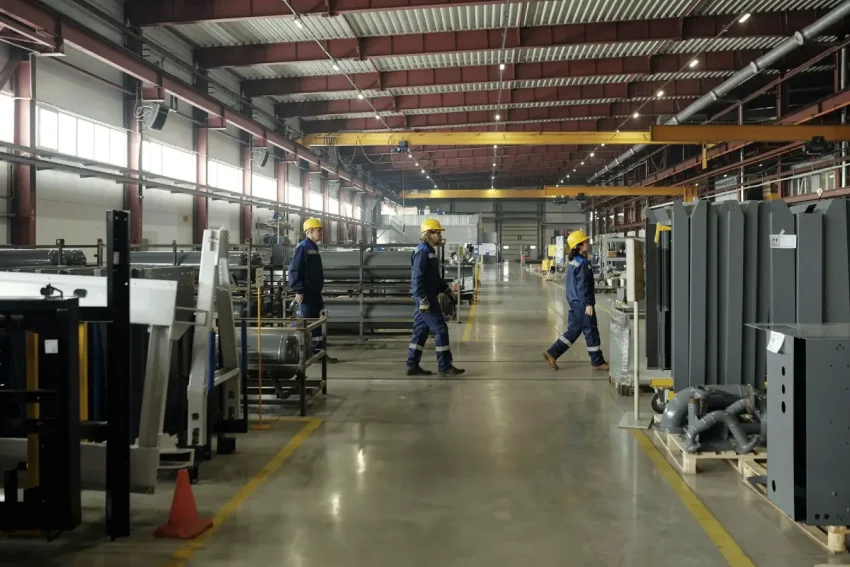Flat-Out Smooth: How Vibrating Tables Make Products Better

Small movements can make a big difference on a factory floor. A gentle, steady shake can turn messy, uneven material into a clean, level finish. That is the job of a vibrating table. It is a strong, flat deck that moves in controlled patterns.
The motion helps air escape, settles product into place, and makes each batch match the last one. VSS designs and builds custom tables for real work, so the setup fits the task instead of forcing the task to fit the tool.
This article explains what the tables do in simple terms and shows where custom design pays off. The aim is clear and friendly, without guesswork or jargon.
Contents
- 1 What a Vibrating Table Does
- 2 Why Custom Design Matters
- 3 Concrete Slabs: Strong and Even
- 4 Settling Product into Containers
- 5 Getting Full Capacity in IBCs
- 6 Testing Components with Fair, Repeatable Motion
- 7 De-Moulding Castings in Foundries
- 8 Taking Bubbles Out of Chocolate
- 9 Safety, Setup, and Care
- 10 Picking Settings That Work
- 11 Clear Wins Across the Floor
- 12 Key Takeaways
What a Vibrating Table Does
Think of a tray on springs with a motor that turns a small offset weight. When the weight spins, the tray shakes. Two details matter most. One is speed, often called frequency. The other is how large each shake is, called amplitude. Fast, small shakes help with light powders and small parts. Slower, stronger shakes help with thick mixes, such as wet concrete.
The motion makes particles move into gaps. Heavy grains slide down. Trapped air moves up and out. Edges fill in. The surface finds its own level. Because the motion is controlled, the result is repeatable. That is the base for good quality.
Teams planning new lines often study different layouts and control options for vibrating tables to match deck size, load limits, and speed ranges to their exact process. A careful match saves time later.
Why Custom Design Matters
One table does not solve every job. Loads vary in weight, size, and shape. Some runs are short and need quick changeovers. Others run all day with the same setup. A custom designed and built table can match all of that: deck area for big molds or pallets, side rails for safety, clamps for test rigs, and variable-speed drives for tuning. The frame can be stiff for heavy work. The mounts can isolate motion so benches next door do not rattle. Good fit leads to less waste and fewer do-overs.
Concrete Slabs: Strong and Even
Concrete wants to be solid and smooth, but air pockets get in the way. Those pockets weaken the finished part. A table pushes bubbles to the surface while the mix is still wet. Corners fill tight. Faces come out clean. Rebar sits where it should.
With slabs and pavers, the effect is clear. The pour looks rough at first. After a short run on the table, the top calms and shines a bit. When the piece cures, there are fewer voids inside and fewer chips on the edges. That means fewer repairs and a steadier schedule.
Custom options help here. A wide, heavy-duty deck supports long molds. Guards and simple foot controls keep hands clear. A timer stops the cycle at the same point each time so the crew does not overdo it and cause separation in the mix. The whole setup is simple, safe, and repeatable.
Settling Product into Containers
Powders, grains, and small parts do not always settle on their own. They bridge and trap air, which wastes space and throws off fill weights. A table breaks those bridges with a gentle buzz. Product drops into gaps and spreads flat. Bags and jars reach the target weight without extra scoops. Risk of collapse in transit drops because the container holds a tight, even load.
Custom decks make this smoother. A non-slip top stops cartons from walking. Side rails add a safety margin. For mixed lines, quick clamps let operators swap fixture plates fast. That keeps the flow steady even when the product changes.
Getting Full Capacity in IBCs
Intermediate Bulk Containers (IBCs) are strong, but large. Filling them without gaps is hard. Air hides in corners and under bridged layers, which steals volume. A table set for slower, deeper motion helps the load settle right down to the base.
The liquid or dry product levels. The top closes without a bulge. During storage, stacks stay square. During transport, loads resist sway. A custom frame with the right mount points carries the weight safely, and isolation pads keep the motion out of the floor.
Testing Components with Fair, Repeatable Motion
Many parts need shake tests: sensors, boards, switches, brackets. The goal is to find weak points before the part goes into the field. A custom table helps by giving the same motion every time. Operators can set speed and time, lock them, and record the settings. Fixtures hold parts in the same position each run. That makes data fair and easy to compare.
Small changes matter here. A stiff deck, balanced drives, and guards around moving weights keep the motion clean. Noise stays low when bolts, bearings, and mounts are in good shape. Maintenance is simple: keep the surface clean, check fasteners, and listen for new sounds.
De-Moulding Castings in Foundries
Castings grip molds. Sand or investment material can hang on in pockets and fine features. A controlled shake helps release the part without hammering or prying. That protects edges and threads. It also saves time and reduces strain on operators. A custom table can include rugged tops, heat-tolerant mats, and side rails sized for foundry trays. Foot pedals free up hands so the crew can guide parts while the table runs short, safe bursts.
Taking Bubbles Out of Chocolate
Chocolate needs a smooth finish to look and taste right. Air bubbles spoil that finish. Gentle vibration lets trapped air rise and break before the product sets. Molds fill sharp. Bars and shells come out clean. For this job, fine control and clean surfaces are key.
A food-safe deck, easy wipe-down edges, and narrow speed steps help teams tune the motion without overdoing it. Short cycles do the work; long cycles can separate light and heavy parts of the mix, which is not wanted.
Safety, Setup, and Care
Good results start with safe habits. Keep guards over rotating weights. Label pinch points. Set a clear load limit and stick to it. Use hearing and eye protection where needed. Train operators to keep hands clear of the deck while the table runs. Add a simple lockout step for maintenance.
Care is not hard. Wipe up wet mix before it hardens. Brush off powders. Check bolts and mounts each week. Replace worn rubber mounts on a set schedule so motion stays true. If noise rises, find the cause early: a loose fastener, a tired bearing, or a deck out of level. Fixes are faster when small.
Picking Settings That Work
Tuning is the secret to quick success. Start with a short test. Watch the surface. If bubbles still appear, add a little time. If parts sink too far or powders start to separate, reduce time or speed. Record the final settings by product, mold, or container so the next run starts in a good place. For mixed lines, variable-speed drives are worth the cost. They let one table serve many jobs without swapping hardware.
Deck features help with control. Soft pads prevent slips. Stops keep pallets centered. For testing, fixture holes or T-slots make it easy to mount rigs in the same spot every time. These small touches save minutes on each cycle, which adds up over a shift.
Clear Wins Across the Floor
Custom designed and built tables bring the process to the tool, not the other way around. In concrete, they raise strength and cut rework. In packaging, they help containers hit target weights and travel well. In foundries, they free castings without damage.
In test labs, they make results fair and repeatable. In food lines, they remove bubbles and protect finish. The same core idea runs through all of these: steady, tuned motion removes hidden problems before they turn into scrap or returns.
Key Takeaways
A vibrating table is a simple machine with wide impact. It settles mixes, levels fills, releases trapped air, and helps parts move cleanly out of molds. Custom design lets the setup match the job—deck size, controls, mounts, and fixtures—so the team does not fight the tool.
Short, tuned cycles give clean results without over-shaking. Safe guards, clean surfaces, tight bolts, and regular checks keep performance steady. With these habits, the work comes off the line flat, smooth, and ready for the next step.



